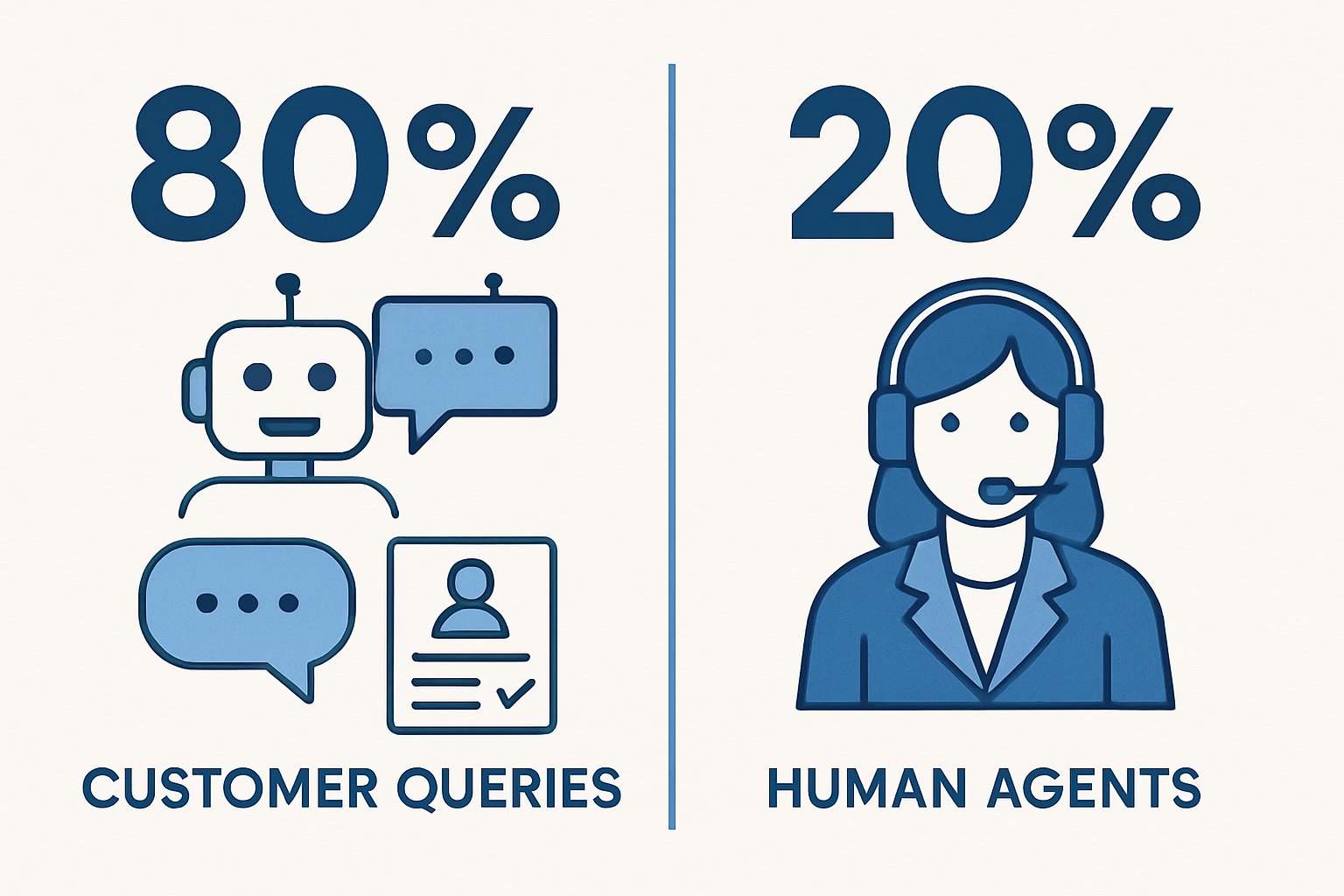
AI CERTS
2 hours ago
AI Transforms Customer Service: Debunking the 80% Automation Myth
This article dissects market data, vendor numbers, technical limits, and social impact. Additionally, it offers a concise checklist for verifying automation claims inside any operation. Readers gain actionable insights for strategic planning and risk management. In doing so, we spotlight emerging standards such as the AI+ Customer Service™ certification that formalize required skills. Therefore, stakeholders can pursue verified expertise while confronting automation realities.
Customer Service Market Momentum
Global spending on conversational AI has surged in 2024. Grand View Research values the segment at $11.6 billion, growing 23.7% annually through 2030. Moreover, Salesforce reports hundreds of thousands of autonomous agent interactions each quarter. Consequently, boardrooms treat AI driven Customer Service as a strategic imperative.

Core Statistics At Glance
- Salesforce claims 84% resolution across Agentforce pilots, citing 93% accuracy.
- LimeChat reports 70% complaint handling, targeting 90% within retail WhatsApp channels.
- Industry benchmarks place simple query deflection between 50% and 90% across sectors.
- Grand View forecasts $41.4 billion market size by 2030.
These figures reveal strong early traction yet rely on vendor telemetry. Nevertheless, deeper analysis exposes notable caveats, discussed in the next section.
Vendor Claims Scrutinized Rigorously
Self-reported statistics dominate conference stages and earnings calls. However, analysts urge caution because methods often exclude complex escalation tickets. For example, LimeChat counts only WhatsApp chats resolving within two minutes. In contrast, repeat contacts after bot failure rarely appear in press releases.
Independent auditors rarely access raw logs or quality ratings. Therefore, the headline 80% figure may mask narrower successes. Customer Service leaders should demand live dashboards, third-party validation, and post-deployment CSAT metrics.
Rigorous validation protects budgets and brand reputation. Next, we examine how end users feel when robots replace humans.
Consumer Sentiment Divides Stakeholders
EY surveys show 78% of Indian online shoppers still prefer human Support channels. Meanwhile, Forrester reports widespread frustration with menu-bound Chatbots that misinterpret intent. Consequently, some firms keep live agents on standby despite aggressive Automation goals.
User trust erodes further when language models hallucinate product instructions or policy details. Moreover, privacy concerns push regulators to demand transparent data handling disclosures.
Satisfaction gaps threaten retention and upsell revenue. However, technical mitigation strategies are evolving rapidly, as the following section details.
Technical Barriers Persist Today
Large language models still hallucinate, especially without retrieval-augmented grounding. In regulated Customer Service scenarios, fabricated advice can trigger fines or recalls. Therefore, architects integrate RAG pipelines and rule-based guardrails to boost factual precision.
Latency also matters because impatient users abandon sessions after eight seconds. Additionally, multilingual Support demands localized training data and cultural tuning.
Scalability challenges surface during holiday traffic peaks when concurrent conversations multiply tenfold. Subsequently, capacity planning must involve autoscaling policies and real-time monitoring.
Technical safeguards limit risk but increase integration complexity. Next, we consider employment repercussions of successful deployments.
Workforce Impact Emerging Rapidly
Reuters documents Indian call-center layoffs following high-deflection Chatbots. Marc Benioff frames the shift as a digital labor revolution, saving millions in operational costs. Meanwhile, affected agents need reskilling toward analytics, escalation, and empathic Support roles.
Governments explore wage insurance and upskilling grants to soften disruption. Furthermore, professional pathways like the AI+ Customer Service™ certification promise transferable expertise across industries.
Employment patterns will evolve as routine tasks vanish. Consequently, verifiable training becomes crucial, leading to our closing guidance section.
Verification Best Practices Guide
Leaders evaluating Customer Service bots can follow a structured checklist. First, request pre- and post-deployment KPIs covering deflection, CSAT, and repeat contact rates. Second, insist on third-party audits of data privacy and hallucination controls. Third, pilot Chatbots within one channel before scaling across voice or email. Finally, train human supervisors to intervene quickly and document Automation errors. Moreover, refresh governance policies quarterly because models and regulations change fast.
Following these steps increases deployment transparency and success. Nevertheless, ongoing measurement is essential to maintain customer trust.
Effective Customer Service no longer relies solely on human agents. However, sustainable gains arise only when Chatbots, analytics, and humans cooperate within clear guardrails. Therefore, executives should benchmark Automation outcomes against verified industry averages, not glossy brochures. Meanwhile, frontline teams must refine emotional Support skills to handle nuanced escalations. Professionals can validate competencies through the AI+ Customer Service™ program and related technical tracks. In summary, disciplined governance turns impressive demos into durable Customer Service excellence. Act now by reviewing your data, refreshing policies, and exploring certification pathways to future-proof Customer Service operations.



